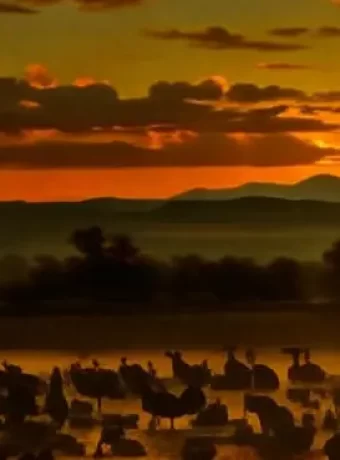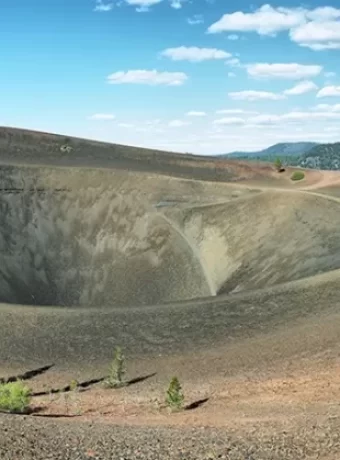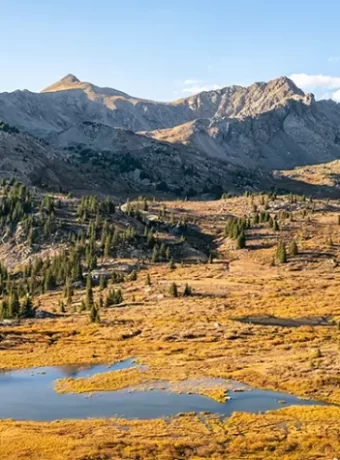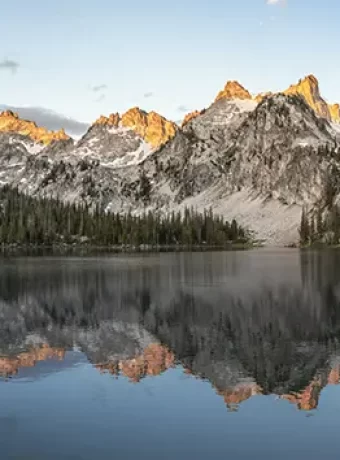Hiking Grand Canyon National Park: An Unforgettable Adventure
Hiking Grand Canyon National Park is more than just a walk in the park. It’s a journey through time, a test of endurance, and an experience that will stay with you forever. I’ve hiked the Grand Canyon dozens of times, and each trek reveals something new about this natural wonder and about myself.
The Grand Canyon isn’t just big – it’s massive. At 277 miles long, up to 18 miles wide, and over a mile deep, it’s a geological masterpiece that’s been carved out by the Colorado River over millions of years. Hiking in this canyon national park gives you a front-row seat to this epic display of nature’s power.
But let’s get one thing straight – this isn’t your average day hike. The Grand Canyon can be unforgiving. The heat can be brutal, the terrain challenging, and the elevation changes significant. But with the right preparation, knowledge, and respect for the environment, it can also be one of the most rewarding experiences of your life.
Table of Contents
Choosing Your Trail
When it comes to hiking Grand Canyon National Park, you’ve got options. Lots of them. But not all trails are created equal. Here are some of the most popular trails and what you can expect from each:
Bright Angel Trail
This is the granddaddy of Grand Canyon hikes. The Bright Angel Trail is well-maintained, has water stations along the way, and offers some shade. But don’t let that fool you – it’s still a challenging hike.
The trail starts at the South Rim and descends 4,380 feet over 9.5 miles to the Colorado River. That means you’ll be climbing all those feet on the way back. I’ve seen plenty of people underestimate this return trip.
South Kaibab Trail
If you want jaw-dropping views and don’t mind a steeper climb, the South Kaibab Trail is your go-to. It’s shorter than Bright Angel at 7 miles to the river, but it’s more exposed and has no water sources along the way.
I once started this trail at sunrise, and the way the light played on the canyon walls was nothing short of magical. But by midday, I was grateful for every ounce of water I’d packed.

Grand Canyon Graphic Hoodie
Sun Protective Grand Canyon Graphic Hoodie. A UPF-50 and a sewn in facemask.

Mayfly Sun Gloves UPF-50 Protection
North Kaibab Trail
For those looking to explore the less-visited North Rim, the North Kaibab Trail is the only maintained trail leading to the Colorado River. It’s the longest and most difficult of the corridor trails, dropping 5,850 feet over 14 miles.
I tackled this trail as part of a rim-to-rim hike, and let me tell you, it’s not for the faint of heart. But the sense of accomplishment when you reach the bottom (or the top, depending on your direction) is unbeatable.
Preparing for Your Hike
Hiking Grand Canyon National Park isn’t something you just decide to do on a whim. It requires planning, preparation, and respect for the environment. Here’s what you need to know:
Physical Preparation
The Grand Canyon will test your physical limits. I learned this the hard way on my first hike. I was in decent shape, but the constant descent followed by a grueling ascent left my legs feeling like jelly.
Start training at least a few months before your hike. Focus on cardio exercises and strength training for your legs. Hiking with a weighted backpack on local trails can help simulate the conditions you’ll face in the canyon.
Gearing Up
Having the right gear can make or break your Grand Canyon experience. Here’s a quick checklist of essentials:
- Sturdy hiking boots (broken in.)
- Plenty of water (1 gallon per person per day)
- High-energy snacks
- Sun protection (hat, sunscreen, sunglasses)
- First aid kit
- Map and compass (don’t rely solely on your phone)
- Headlamp or flashlight
Know the Weather
The weather in the Grand Canyon can be extreme and unpredictable. Temperatures at the rim can be 20-30 degrees cooler than at the bottom of the canyon. In summer, temperatures can soar above 100°F (38°C) in the inner canyon.
I once started a hike in pleasant 70°F weather at the rim, only to find myself trudging through 100°F heat at the bottom. Always check the weather forecast before you go and be prepared for changes.
Hiking Safely in the Grand Canyon
Safety should be your top priority when hiking Grand Canyon National Park. Here are some crucial tips to keep in mind:
Start Early, Avoid the Heat
The best time to start your hike is at or before sunrise. This allows you to tackle the most strenuous parts of your hike before the heat of the day sets in. On my last Bright Angel hike, I hit the trail at 5 AM. By the time the sun was high and hot, I was already on my way back up.
Pace Yourself
Remember, hiking in the Grand Canyon is like climbing a mountain in reverse. You start with the easy part (going down) and end with the hardest part (climbing back up). Don’t rush the descent – you’ll need that energy for the return trip.
Stay Hydrated
Dehydration is a real danger in the Grand Canyon. Drink water often, even if you don’t feel thirsty. A good rule of thumb is to drink about a half to one quart of water or sports drinks each hour you’re hiking in the heat.
Know Your Limits
There’s no shame in turning back if you’re not feeling up to the full hike. The canyon will still be there for your next visit. Listen to your body and don’t push beyond your limits.
Unique Experiences in the Grand Canyon
Hiking Grand Canyon National Park isn’t just about the physical challenge. It’s also about the unique experiences you’ll encounter along the way.
Phantom Ranch
If you’re doing a multi-day hike, consider staying at Phantom Ranch. This rustic lodge at the bottom of the canyon is the only lodging below the rim. Reservations are hard to come by (they’re available 13 months in advance), but it’s an experience like no other.
I still remember the taste of the ice-cold lemonade I had at Phantom Ranch after a long day of hiking. It was possibly the best drink I’ve ever had in my life.
Ribbon Falls
If you’re hiking the North Kaibab Trail, make a detour to Ribbon Falls. This oasis in the desert is about 5.6 miles from the North Rim. The sight of water cascading over moss-covered rocks in the middle of the arid canyon is truly spectacular.
Desert View Watchtower
While not on the hiking trails, the Desert View Watchtower is worth a visit before or after your hike. This 70-foot tower on the South Rim offers panoramic views of the canyon and the Painted Desert. It’s a great place to get a bird’s eye view of the terrain you’ve just conquered.
Preserving the Grand Canyon
As hikers, we have a responsibility to preserve this natural wonder for future generations. Here are some ways to minimize your impact:
- Stay on designated trails.
- Pack out all trash (including biodegradable items).
- Don’t feed or approach wildlife.
- Use refillable water bottles instead of disposable ones.
- Respect archaeological sites and don’t remove any artifacts.
Remember, we’re guests in this ancient landscape. Let’s treat it with the respect it deserves.
Additional Hiking Options
While the corridor trails are popular, there are other fantastic hiking options in Grand Canyon National Park. The Hermit Trail offers a challenging route with fewer crowds. For those seeking a short hike with spectacular views, consider the Widforss Trail on the North Rim.
If you’re looking for a unique perspective, the Cape Royal Trail provides stunning vistas of the canyon and the Colorado River. For a more strenuous adventure, the route to Roaring Springs via the North Kaibab Trail is unforgettable.
Park Navigation and Services
Navigating Grand Canyon National Park can be overwhelming for first-time visitors. The park offers shuttle buses that connect various viewpoints and trailheads. The Visitor Center is an excellent starting point to gather information and plan your hike.
For those interested in guided experiences, the Grand Canyon Conservancy Field Institute offers single-day hiking tours led by expert guides. These tours provide in-depth knowledge about the canyon’s geology, ecology, and history.
FAQs about Hiking Grand Canyon National Park
Can a beginner hike the Grand Canyon?
Yes, beginners can hike in the Grand Canyon, but it’s important to choose an appropriate trail. The Rim Trail on the South Rim is relatively flat and offers stunning views without the steep climbs. For those wanting to go below the rim, consider short day hikes on the upper portions of Bright Angel or South Kaibab trails. Always research the trail difficulty, prepare adequately, and know your limits.
How difficult is hiking the Grand Canyon?
Hiking in the Grand Canyon can range from easy to extremely strenuous. Rim trails are generally easy to moderate, while trails that descend into the canyon are more challenging due to steep grades and extreme temperature changes. The difficulty also depends on factors like the time of year, your physical fitness, and how far you plan to hike. Always be prepared and don’t underestimate the return trip – remember, hiking out is much more difficult than hiking in.
Which Grand Canyon hike is best?
The “best” hike depends on your experience level, physical condition, and what you want to see. For beginners, the Rim Trail offers easy walking and great views. For a taste of the inner canyon, Bright Angel Trail to the 1.5 or 3-mile resthouses is popular. For experienced hikers, South Kaibab to Skeleton Point or even to the river (for the very fit) offers spectacular views. The North Kaibab Trail on the less crowded North Rim is also excellent for experienced hikers.
How long does it take to hike up the Grand Canyon?
The time it takes to hike up the Grand Canyon varies greatly depending on the trail, your fitness level, and how far down you’ve gone. As a general rule, it takes about twice as long to hike up as it does to hike down. For example, if you’ve hiked to the river on Bright Angel Trail (9.5 miles), expect the return trip to take 7-8 hours for fit hikers. Always start early, pace yourself, and be prepared to turn back if needed.
Conclusion of Hiking Grand Canyon National Park
Hiking Grand Canyon National Park is more than just a physical challenge – it’s a journey through Earth’s history, a test of personal limits, and an unforgettable adventure. From the moment you take your first step below the rim, you’re entering a world that’s both beautiful and unforgiving.
Whether you’re tackling the popular Bright Angel Trail, braving the steep South Kaibab, or exploring the less-traveled North Rim, each hike offers its own unique perspective on this natural wonder. The key to a successful and enjoyable hike is preparation, respect for the environment, and a willingness to be awed by the grandeur around you.
Remember, the Grand Canyon isn’t going anywhere. If you can’t make it to your planned destination, there’s no shame in turning back. The views are spectacular from every angle, and sometimes the journey is more important than the destination.
So lace up your boots, fill up your water bottles, and get ready for an adventure of a lifetime. Hiking Grand Canyon National Park isn’t just a walk in the park – it’s a walk through time, a test of endurance, and an experience that will stay with you long after you’ve left the canyon behind.






